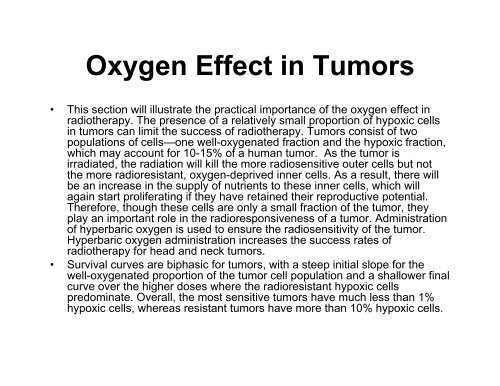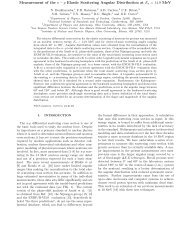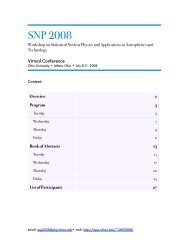Module 6 Survival curves
Module 6 Survival curves
Module 6 Survival curves
- No tags were found...
You also want an ePaper? Increase the reach of your titles
YUMPU automatically turns print PDFs into web optimized ePapers that Google loves.
Oxygen Effect in Tumors• This section will illustrate the practical importance of the oxygen effect inradiotherapy. The presence of a relatively small proportion of hypoxic cellsin tumors can limit the success of radiotherapy. Tumors consist of twopopulations of cells—one well-oxygenated fraction and the hypoxic fraction,which may account for 10-15% of a human tumor. As the tumor isirradiated, the radiation will kill the more radiosensitive outer cells but notthe more radioresistant, oxygen-deprived inner cells. As a result, there willbe an increase in the supply of nutrients to these inner cells, which willagain start proliferating if they have retained their reproductive potential.Therefore, though these cells are only a small fraction of the tumor, theyplay an important role in the radioresponsiveness of a tumor. Administrationof hyperbaric oxygen is used to ensure the radiosensitivity of the tumor.Hyperbaric oxygen administration increases the success rates ofradiotherapy for head and neck tumors.• <strong>Survival</strong> <strong>curves</strong> are biphasic for tumors, with a steep initial slope for thewell-oxygenated proportion of the tumor cell population and a shallower finalcurve over the higher doses where the radioresistant hypoxic cellspredominate. Overall, the most sensitive tumors have much less than 1%hypoxic cells, whereas resistant tumors have more than 10% hypoxic cells.








